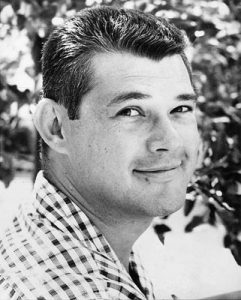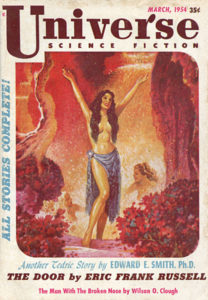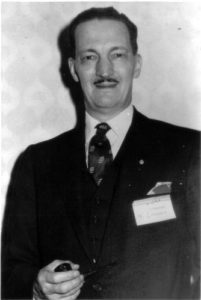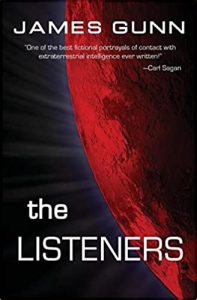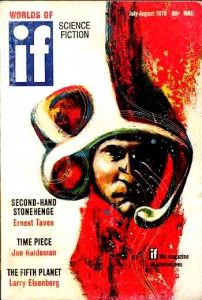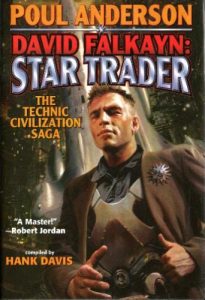 Today, June 16, is the birthday of Will F. Jenkins, better known as Murray Leinster (1896-1975). Once known as the Dean of Science Fiction, Leinster has faded into obscurity these days. Which is a shame, because he was a fine writer, at least at shorter lengths.
Today, June 16, is the birthday of Will F. Jenkins, better known as Murray Leinster (1896-1975). Once known as the Dean of Science Fiction, Leinster has faded into obscurity these days. Which is a shame, because he was a fine writer, at least at shorter lengths.
Today I want to look at two stories. Both can be found in First Contacts: The Essential Murray Leinster.
The first is “Sidewise in Time.” The Sidewise Award for best alternate history story is named after this story. Timelines begin to intermingle, causing all kinds of havoc. A math professor at a small backwater college calls them fault lines and has figures out how long they will continue. He takes a group of seven undergraduates (three men and four women, one of whom he wants for himself) on horseback to explore a sequoia forest outside of town. He’s planned this carefully, filing the saddle bags with food, weapons, and books they will need. He plans to find a timeline where they can take over and become rulers. He didn’t ask the students if they were interested in taking over a world.
This story blew my mind when I read it at the impressionable age of 12 or 13 in a book I checked out from the junior high library (Worlds of Maybe, edited by Robert Silverberg). This was at least the fourth time I’d read it. One of the things I like about it is that Leinster shows what other things are happening to different people who cross these faults, and he is able to establish characters in just a few paragraphs. The scene where a cohort of Roman soldiers march down a suburban street and behead the driver that honks at them has stayed with me for years, as has the part where a farmer standing in front of a jungle where his crops used to be is eaten when a mouth at the end of a long neck extends from the jungle.
“Sidewise in Time” is a classic that is very much worth reading. Will the professor end up with the undergraduate he wants? Will he end up with someone else? Read the story and find out.
The other story is “The Strange Case of John Kingman”. A psychiatrist at mental institution wants to try a new treatment. When he goes to examine the file on the patient he has selected, he’s in for a shock. The story is set in 1948, the year it was written, The patient was admitted in the late 1700’s. There are also some other things strange about the patient. He has six fingers. His body temperature is about 105. He has two hearts. And he can draw diagrams of things that are beyond the level of 1948 technology
This is a story about being too greedy for knowledge. It takes the idea of an alien stranded and does something different with it.
Leinster is worth reading. Check him out.
 Today, July 7, marks the 115th birthday of one of the most influential science fiction writers of the 20th Century. I’m talking, of course, about Robert A. Heinlein.
Today, July 7, marks the 115th birthday of one of the most influential science fiction writers of the 20th Century. I’m talking, of course, about Robert A. Heinlein.




